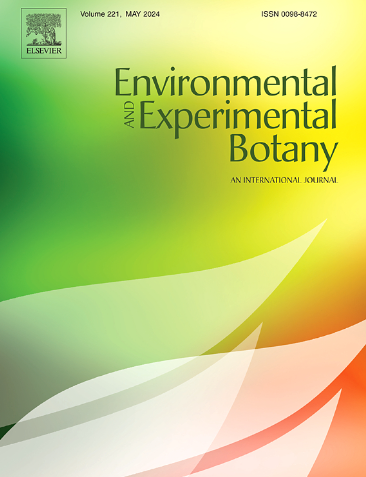A wheat NAC transcription factor, TaNAC018-7D, regulates seed dormancy and germination by binding to the GA biosynthesis gene TaGA7ox-A1
IF 4.7
2区 生物学
Q2 ENVIRONMENTAL SCIENCES
引用次数: 0
Abstract
Pre-harvest sprouting (PHS) reduces grain yield and quality and poses a serious threat to global wheat production. Seed dormancy and germination are closely related to PHS resistance. However, the intricate regulatory processes governing seed dormancy and germination remain largely unknown. Here, we reported that a NAC transcription factor gene (TaNAC018–7D) is highly expressed in weak-dormancy wheat cultivar Jing 411 compared with a strong-dormancy landrace Hongmangchun 21 during seed germination. Germination tests revealed that TaNAC018–7D negatively regulates seed dormancy and positively mediates germination in transgenic lines of Arabidopsis and rice, and wheat mutants induced by ethyl methane sulfonate in the Jing 411 background. Subcellular localization analysis indicated that TaNAC018–7D is located in the nucleus and cytoplasm. Physiological, biochemical, and molecular experiments indicated that TaNAC018–7D interacts with the promoter of the GA biosynthesis gene TaGA7ox-A1 and activates its expression, thereby shortening seed dormancy and promoting germination. In summary, this study provides a new target gene for improving wheat PHS resistance, and improves the understanding of the complex regulatory network of PHS resistance.
小麦NAC转录因子TaNAC018-7D通过结合GA生物合成基因TaGA7ox-A1调控种子休眠和萌发
收获前发芽(PHS)降低了粮食产量和质量,对全球小麦生产构成严重威胁。种子的休眠和萌发与小灵通抗性密切相关。然而,控制种子休眠和发芽的复杂调控过程在很大程度上仍然未知。在此,我们报道了NAC转录因子基因TaNAC018-7D在弱休眠小麦品种粳411种子萌发过程中比强休眠地方品种红芒春21高表达。萌发试验表明,在京411背景下,TaNAC018-7D负调控拟南芥、水稻和小麦突变体的种子休眠,而正调控萌发。亚细胞定位分析表明,TaNAC018-7D位于细胞核和细胞质中。生理生化和分子实验表明,TaNAC018-7D与GA生物合成基因TaGA7ox-A1的启动子相互作用,激活其表达,从而缩短种子休眠,促进萌发。综上所述,本研究为提高小麦小灵通抗性提供了新的靶基因,提高了对小灵通抗性复杂调控网络的认识。
本文章由计算机程序翻译,如有差异,请以英文原文为准。
求助全文
约1分钟内获得全文
求助全文
来源期刊

Environmental and Experimental Botany
环境科学-环境科学
CiteScore
9.30
自引率
5.30%
发文量
342
审稿时长
26 days
期刊介绍:
Environmental and Experimental Botany (EEB) publishes research papers on the physical, chemical, biological, molecular mechanisms and processes involved in the responses of plants to their environment.
In addition to research papers, the journal includes review articles. Submission is in agreement with the Editors-in-Chief.
The Journal also publishes special issues which are built by invited guest editors and are related to the main themes of EEB.
The areas covered by the Journal include:
(1) Responses of plants to heavy metals and pollutants
(2) Plant/water interactions (salinity, drought, flooding)
(3) Responses of plants to radiations ranging from UV-B to infrared
(4) Plant/atmosphere relations (ozone, CO2 , temperature)
(5) Global change impacts on plant ecophysiology
(6) Biotic interactions involving environmental factors.
 求助内容:
求助内容: 应助结果提醒方式:
应助结果提醒方式:


